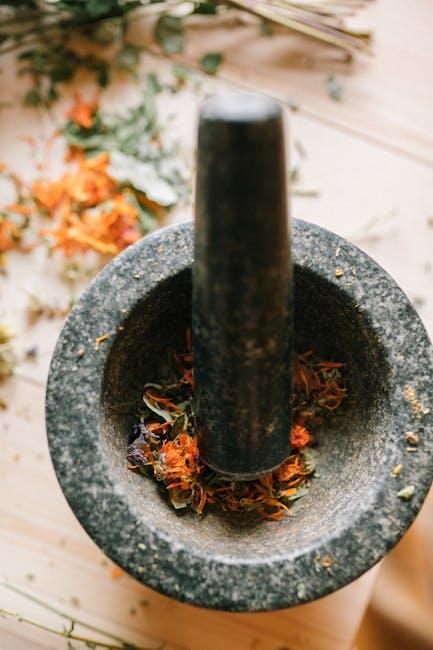In the labyrinth of modern healthcare, chronic pain often stands as an elusive adversary, challenging both patients and practitioners with its persistence and complexity. While conventional medicine offers a range of treatments, from pharmaceuticals to physical therapy, a growing number of individuals are turning to alternative medicine in search of relief. Acupuncture, herbal remedies, chiropractic adjustments, and mindfulness practices are just a few of the modalities gaining traction in this quest for healing. Yet, amidst the rise in popularity, questions linger: Are these alternative practices truly effective, or are they merely the soothing whispers of hope in a world desperate for solutions? This article embarks on an exploration of the efficacy of alternative medicine for chronic pain, navigating through the currents of scientific research, patient experiences, and the intricate dance between mind and body. Join us as we delve into this multifaceted landscape, seeking clarity amidst the haze of pain and possibility.
Exploring the Landscape of Alternative Therapies for Chronic Pain
Chronic pain is a persistent and often debilitating condition that affects millions worldwide, prompting many to explore beyond conventional medical treatments. Alternative therapies have garnered attention for their potential to alleviate pain and improve quality of life. Among these, acupuncture, chiropractic care, and herbal remedies have shown promise in various studies. Acupuncture, for instance, involves inserting thin needles at specific points on the body to balance energy flow and has been reported to reduce pain levels in some chronic pain sufferers. Chiropractic care focuses on spinal manipulation to improve alignment, which may alleviate pain and enhance physical function. Herbal remedies, such as turmeric and ginger, are believed to possess anti-inflammatory properties that might help in managing pain.
While these practices offer potential benefits, it is essential to approach them with a critical eye. Considerations such as the individual’s specific condition, existing medical treatments, and personal preferences play a crucial role in determining effectiveness. Moreover, while some individuals report significant relief, others may experience minimal changes or even adverse effects. Therefore, it’s crucial to consult with healthcare professionals before embarking on any alternative therapy journey, ensuring that these practices complement existing treatment plans safely and effectively.
Understanding the Mechanisms: How Alternative Practices Aim to Alleviate Pain
Chronic pain is a complex and multifaceted condition, and alternative medicine practices have emerged as intriguing options for those seeking relief beyond conventional treatments. These practices, ranging from acupuncture to herbal remedies, are grounded in diverse philosophies and techniques aimed at addressing pain from a holistic perspective. Acupuncture, for instance, involves the insertion of thin needles into specific points on the body to stimulate nerves and release endorphins, the body’s natural painkillers. Chiropractic care focuses on spinal alignment to alleviate pain and improve function, while massage therapy employs touch to relieve tension and enhance circulation.
Several alternative practices emphasize the connection between mind and body, proposing that pain relief can be achieved by cultivating mental wellness. Meditation and yoga, for example, are believed to reduce pain perception by promoting relaxation and mindfulness. Herbal supplements such as turmeric and ginger are celebrated for their anti-inflammatory properties, offering a natural complement to pain management strategies. While scientific evidence varies, many individuals report subjective improvements in pain levels, suggesting that the potential benefits of these practices may lie in their ability to empower patients to take an active role in their own healing journey.
- Acupuncture
- Chiropractic care
- Massage therapy
- Meditation
- Yoga
- Herbal supplements

Evaluating Efficacy: Scientific Evidence Behind Popular Alternative Treatments
In the realm of chronic pain management, alternative medicine practices have garnered significant attention. These treatments, often rooted in ancient traditions, have been embraced by many seeking relief beyond conventional medicine. Scientific scrutiny has been directed towards several popular therapies to evaluate their effectiveness. Acupuncture, for instance, has shown promising results in various studies, with many suggesting its potential in alleviating pain by stimulating specific points on the body to release natural painkillers. Chiropractic care, another widely adopted method, involves spinal manipulation and has been reported to provide relief for some patients suffering from back pain. However, the evidence remains mixed, necessitating further rigorous studies to confirm its efficacy.
- Herbal Remedies: Plants like turmeric and ginger have been praised for their anti-inflammatory properties, though clinical trials are needed to substantiate these claims.
- Massage Therapy: This practice is widely believed to enhance relaxation and reduce muscle tension, with some studies supporting its short-term benefits for pain relief.
- Mind-Body Techniques: Practices such as yoga and tai chi emphasize the connection between mental and physical health, with some evidence pointing to their role in reducing chronic pain symptoms.
Despite the growing popularity and anecdotal support for these alternative treatments, the scientific community remains cautious. The lack of large-scale, controlled studies often leaves the efficacy of such practices in question. For individuals exploring these options, it’s crucial to consult healthcare professionals and consider integrating these methods with conventional treatments to achieve optimal outcomes.

Guidance for Patients: Integrating Alternative Medicine into Chronic Pain Management
For those exploring alternative medicine as part of their chronic pain management strategy, it’s crucial to understand the potential benefits and limitations of these practices. Alternative therapies such as acupuncture, chiropractic care, and herbal supplements can offer relief by addressing pain from a holistic perspective. These approaches often emphasize the mind-body connection, promoting relaxation and reducing stress, which can indirectly alleviate pain.
- Acupuncture: This ancient Chinese practice involves inserting thin needles into specific points on the body to balance energy flow, which can help reduce pain.
- Chiropractic Care: Focusing on spinal manipulation, this method aims to restore mobility and reduce discomfort.
- Herbal Supplements: Natural remedies such as turmeric and ginger may have anti-inflammatory properties that can ease chronic pain.
While many patients report positive outcomes, it’s essential to consult with healthcare providers to ensure these methods are suitable for your specific condition. Integrating alternative medicine should be part of a comprehensive pain management plan, ensuring that it complements rather than replaces conventional treatments.








